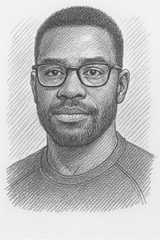Unlock Pain Relief with Trigger Point Massage
Discover effective pain relief through trigger point massage, a specialized technique that targets muscle knots and tension. Learn how this therapy can improve mobility and reduce discomfort

https://www.youtube.com/watch?v=telHwkbwhkY
Did you know 70% of people get muscle tension from their jobs? Trigger point massage is a strong way to fight muscle pain and stiffness. This myofascial release technique targets muscle tension better than regular massages.
Dr. Janet G. Travell changed how we see muscle pain in the early 1900s. She found that trigger points are sensitive spots that cause pain all over the body. Muscle knots come from stress, doing the same thing over and over, and bad posture. This makes a cycle of pain that affects our daily lives.
Trigger point massage is a smart way to tackle these painful muscle knots. It uses exact pressure on certain spots to lessen pain, boost movement, and better our health. Those with long-term muscle tension can get a lot of relief from these focused massages.
Key Takeaways
- 70% of muscle tension is workplace-related
- Trigger points can cause pain in multiple body areas
- Massage can improve mobility and posture
- Most individuals experience reduced pain after treatment
- Targeted muscle therapy addresses chronic tension effectively
Understanding Trigger Points and Their Impact on Your Body
Trigger points are muscle knots that can really mess up your day. They cause pain that spreads far from where they start. Knowing how they form and affect us is key to managing pain.
What Causes Trigger Points to Form
Many things can lead to muscle knots. The main reasons include:
- Chronic muscle overuse
- Physical trauma
- High stress levels
- Poor posture
- Skeletal system imbalances
About 75% of people deal with muscle pain from these knots at some point. Deep tissue massage can find and fix these trouble spots.
How Trigger Points Affect Your Daily Life
These knots can really limit your movement and hurt a lot. They send referred pain to other parts of your body. This makes treating the pain tricky.
| Trigger Point Type | Pain Characteristics | Impact on Movement |
|---|---|---|
| Active Trigger Points | Constant pain at rest | Severe movement restriction |
| Passive Trigger Points | Pain during compression | Mild movement limitations |
The Science Behind Muscle Tension and Pain
Trigger points cut off blood flow, starving muscles of oxygen. This leads to a cycle of pain and muscle problems. About 10% of Americans live with chronic muscle pain, with trigger points being a big part of it.
Experts use special massage methods to fight this cycle and heal muscles.
The Essential Benefits of Trigger Point Massage
Therapeutic massage is a powerful tool for those with muscle tension and chronic pain. Trigger point massage is a standout method for pain relief. It tackles many health issues at once.
Those who get muscle tension relief see many benefits from this massage:
- Enhanced Mobility: Releases muscle restrictions and improves overall movement
- Stress Reduction: Calms the nervous system and decreases mental tension
- Improved Sleep Quality: Alleviates muscle discomfort that interrupts rest
- Energy Restoration: Counteracts fatigue caused by tight muscle groups
Athletes and office workers get a lot from trigger point massage. It targets specific muscle groups. This helps prevent injuries, reduces soreness after workouts, and tackles chronic pain like sciatica and low back pain.
Massage therapists use strategic compression for 30-90 seconds. They watch the client's comfort closely. The aim is to get the most benefit without causing too much pain, aiming for a seven out of ten on the pain scale.
Professional Trigger Point Massage Techniques and Applications
Trigger point therapy is a special way to deal with muscle pain and tension. Professional massage techniques have grown to offer focused relief for those with long-term muscle pain. Therapeutic approaches aim to find and treat specific muscle problems.
Key Massage Methods for Pain Relief
Deep tissue massage and myofascial release are key in trigger point therapy. Experts use various methods to tackle muscle tension:
- Ischemic compression technique: Applying sustained pressure until pain recedes
- Gentle stretching to manipulate fascial tissues
- Targeted pressure point release
Tools and Equipment Used in Treatment
Therapists use special tools to make trigger point massage more effective. These include:
- Foam rollers
- Massage balls
- Massage sticks
- Vibration massage devices
The upper trapezius muscle is often targeted in trigger point therapy. It's commonly linked to neck and shoulder pain.
Duration and Frequency of Sessions
| Session Type | Duration | Frequency |
|---|---|---|
| Initial Assessment | 60-90 minutes | Once |
| Follow-up Treatment | 30-45 minutes | Weekly or Bi-weekly |
| Maintenance Session | 30 minutes | Monthly |
Clinical trials show that moderate pressure can offer a lot of relief. Complementary therapies like yoga also help with muscle recovery and prevent trigger points.
Therapists usually apply pressure for 30 to 90 seconds to release muscle tension fully. Almost 80% of trigger points can send pain to other areas, making precise treatment key for managing pain well.
Conclusion
Trigger point massage is a strong way to fight chronic pain and muscle tightness. Studies show most people feel better in just one week of regular sessions. It's all about knowing your body's pain spots and using the right massage.
Managing pain is different for everyone. For example, 5-12% of adults deal with orofacial pain, and young women often feel more muscle pain. Adding trigger point massage to your routine can help ease muscle tightness and boost your life quality.
Even though research is still growing, experts agree on a few things. They say massages should last 3 to 5 minutes and be moderately firm, about a 5 out of 10. A professional can create a plan just for you, making sure it's safe and works well.
In the end, trigger point massage is a whole-body way to tackle pain. By choosing this method, you're taking a big step towards feeling better physically. It can lead to less muscle tightness and better daily life.
FAQ: Trigger Point Massage Insights
What exactly is a trigger point?
A trigger point is a tight muscle area that forms after overuse, injury, or stress. These knots can cause pain and limit movement. They can also send pain to other parts of the body.
How does trigger point massage differ from regular massage?
Trigger point therapy targets specific muscle knots. It uses precise pressure and techniques to release tension. This approach focuses on the root cause of pain, unlike general relaxation massages.
Who can benefit from trigger point massage?
Many people can benefit from trigger point massage. This includes athletes, office workers, and those with chronic pain. It's also good for muscle tension and repetitive strain injuries.
How long does a typical trigger point massage session last?
A typical session lasts 45 to 90 minutes. The time depends on the number of trigger points and the individual's needs.
Are there any side effects to trigger point massage?
Some might feel soreness, bruising, or discomfort after a session. These effects are usually short-lived. Staying hydrated and following post-massage care can help.
Can I perform trigger point massage on myself?
Yes, self-massage can help manage trigger points. Tools like foam rollers and massage balls can be useful. But, it's best to start with a professional to learn proper techniques.
How often should I get trigger point massage?
The frequency depends on your needs. Most recommend sessions every 2-4 weeks. Those with chronic pain might need more frequent treatments.
Is trigger point massage covered by health insurance?
Coverage varies by insurance. Some policies cover it for chronic pain or rehabilitation. Check your plan.
What should I wear during a trigger point massage?
Wear loose, comfortable clothes. This allows easy access to the treated areas. Therapists use draping techniques to ensure your comfort.
How quickly can I expect results from trigger point massage?
Results vary, but many feel relief and improved movement after one session. Regular treatment can lead to long-term improvements.
👉 Join the Active Man Community
Get expert tips, workout guides, nutrition hacks, and the latest trends delivered straight to your inbox every week. No spam — just actionable insights to help you live stronger, healthier, and better.





